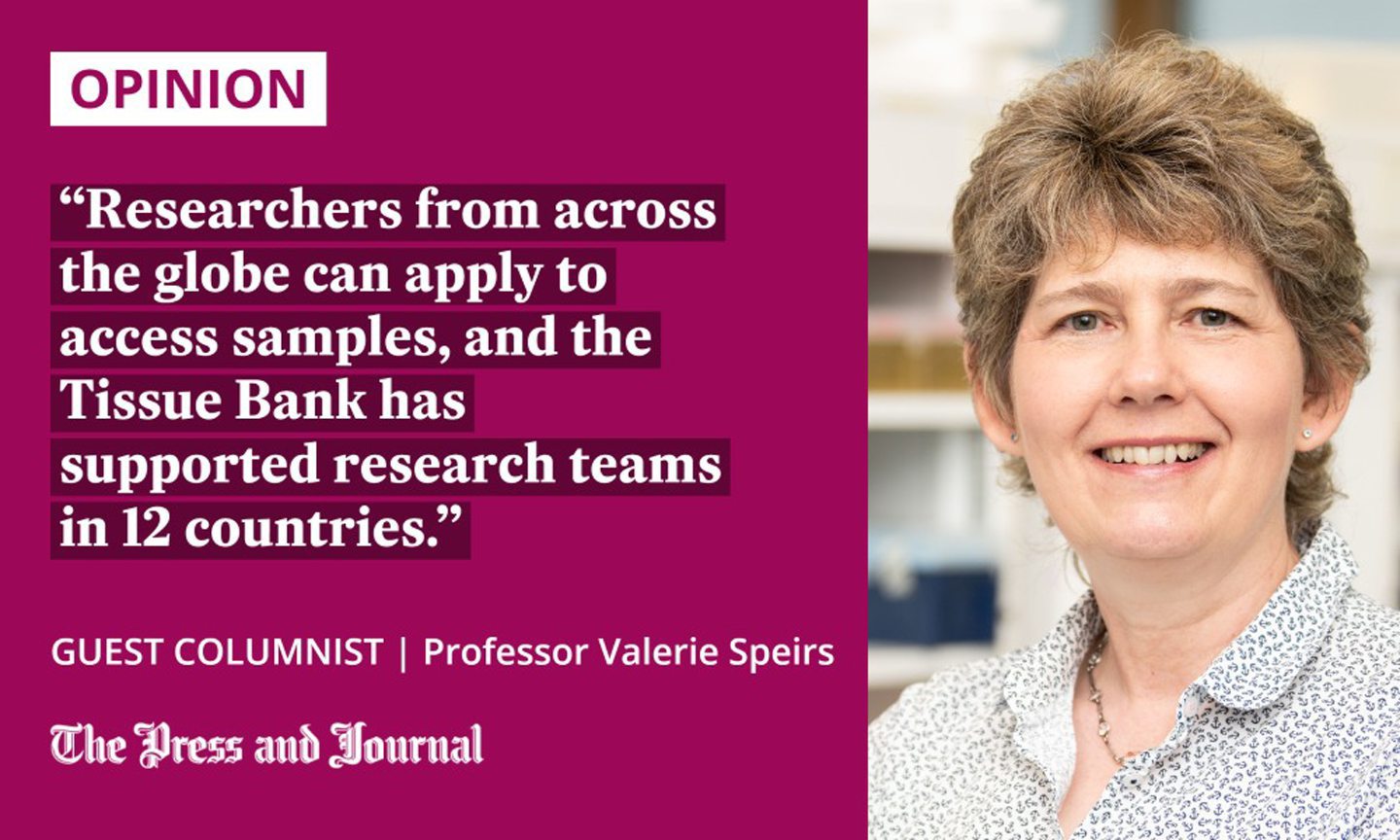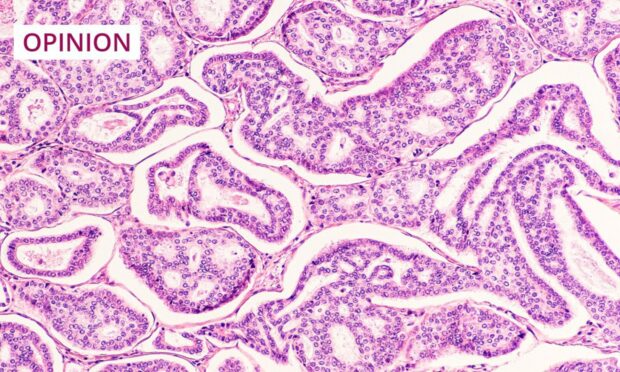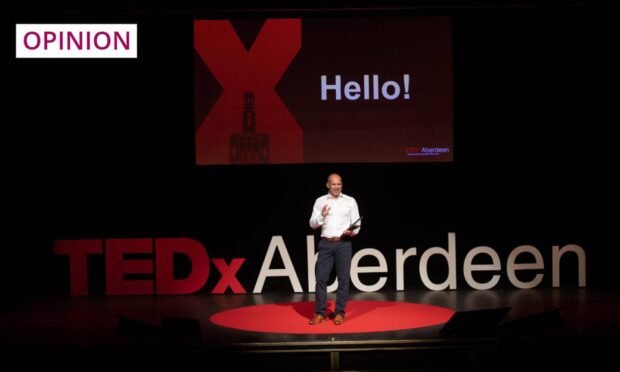I have been fortunate enough to enjoy a 30-year-long career in cancer research.
I would absolutely say that my greatest achievement has been my involvement in setting up and running the Breast Cancer Now Tissue Bank.
First established in 2010, we opened the Tissue Bank up to researchers in 2012. Our primary objective was to give researchers access to breast tissue samples from breast cancer patients with a view to improving the pace and accuracy of cancer research.

Since its inception, the Tissue Bank has done just that, vastly accelerating our progress towards faster diagnosis and better cancer treatments.
Today, it sits across four dedicated sites, including the Aberdeen Cancer Centre at the University of Aberdeen – currently the only Scottish centre involved with the Tissue Bank.
It was a massive undertaking to bring the project together, and it gives me enormous satisfaction and a real sense of pride to be involved in establishing this alongside my colleagues and, more so, to see it flourish today.
Helping researchers around the world
The idea to establish a breast cancer tissue bank first came about during a meeting in November 2006. I, along with 56 of the UK’s most influential breast cancer experts, identified the key gaps and priorities in breast cancer research. We wanted to pinpoint what we could do that would have the greatest impact on improving the lives of people with breast cancer.
We all agreed that the most significant barrier to accelerating progress was a shortage of high-quality breast cancer tissue. From this discussion, our Tissue Bank was born.
By collecting tissue samples from people affected by breast cancer and making them available to researchers, the Breast Cancer Now Tissue Bank accelerates progress towards faster diagnosis and better treatments. Find out more here: https://t.co/WWmDWMDzmf pic.twitter.com/OVM8MNwqjy
— Breast Cancer Now (@BreastCancerNow) September 12, 2022
I was immensely proud to oversee the launch and facilitate the delivery of tissue samples donated by people with breast cancer to the research community.
Over the last 10 years, the team has worked hard to keep up with the latest advancements in science, to make sure the Tissue Bank can keep up with ever-changing demand.
Together with sites in London, Norwich and Sheffield, the University of Aberdeen has contributed to the Tissue Bank by collecting samples from breast cancer patients who present to Aberdeen Royal Infirmary, bringing the total collection to 126,000 samples.
It brings me immense pride when I see how the Tissue Bank has contributed to some key insights into breast cancer
Researchers from across the globe can apply to access samples, and the Tissue Bank has supported research teams in 12 countries: the UK, Taiwan, USA, Italy, Finland, Sweden, South Korea, Portugal, Norway, Spain, Switzerland and Germany.
Everyone involved with the Tissue Bank is an active researcher, so we know and understand the research landscape. This means we have been able to adapt and evolve over the last 10 years to meet the need of researchers, and we will continue to do this to make outcomes for breast cancer patients the very best they can be.
Patients who donate tissue make change possible
It brings me immense pride when I see how the Tissue Bank has contributed to some key insights into breast cancer. For example, scientists from Queen Mary University of London and the Francis Crick Institute used samples from the Tissue Bank to identify a treatment that may reduce the risk of people developing breast cancer linked with obesity.
Samples from the Tissue Bank have also contributed to research at the University of York, which found a protein on cancer cells that may help breast cancer spread around the body. This discovery could eventually lead to a diagnostic tool for breast cancer.
Researchers at the Barts Cancer Institute at Queen Mary University of London used cells donated to the Tissue Bank to recreate a structure closely resembling breast ducts in their laboratory. The scientists are now using this 3D model to study an early form of breast cancer.
It's #BreastCancerAwarenessMonth.
Breast cancer can cause a number of signs and symptoms. Get used to checking regularly and be aware of anything that’s new or different for you. pic.twitter.com/Jaf1a6DkgN
— NHS (@NHSuk) October 1, 2022
Fundamentally, however, whilst I am tremendously proud of the whole Tissue Bank team in bringing this idea to fruition, none of our achievements would have been possible without the thousands of cancer patients who donated their tissue, and for that I would like to express my deepest gratitude.
The initiative is also generously supported by funding from the Asda Tickled Pink charity, and the Garfield Weston Foundation. I would also like to acknowledge the past support of charity Walk the Walk, a founding partner of the Tissue Bank.
Moving forward, as the number and diversity of projects the Tissue Bank supports continues to grow, I am confident that at least one of these will provide a new breakthrough for the women and men all over the world who are diagnosed with breast cancer.
- To help Breast Cancer Now continue its vital work through projects like the Tissue Bank, please visit breastcancernow.org/donate
Professor Valerie Speirs is chair of molecular oncology at the University of Aberdeen, and co-principal investigator of the Breast Cancer Now Tissue Bank











Conversation